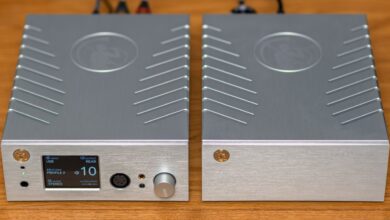Trafomatic Head 2 Review – Hard As A ROCK!
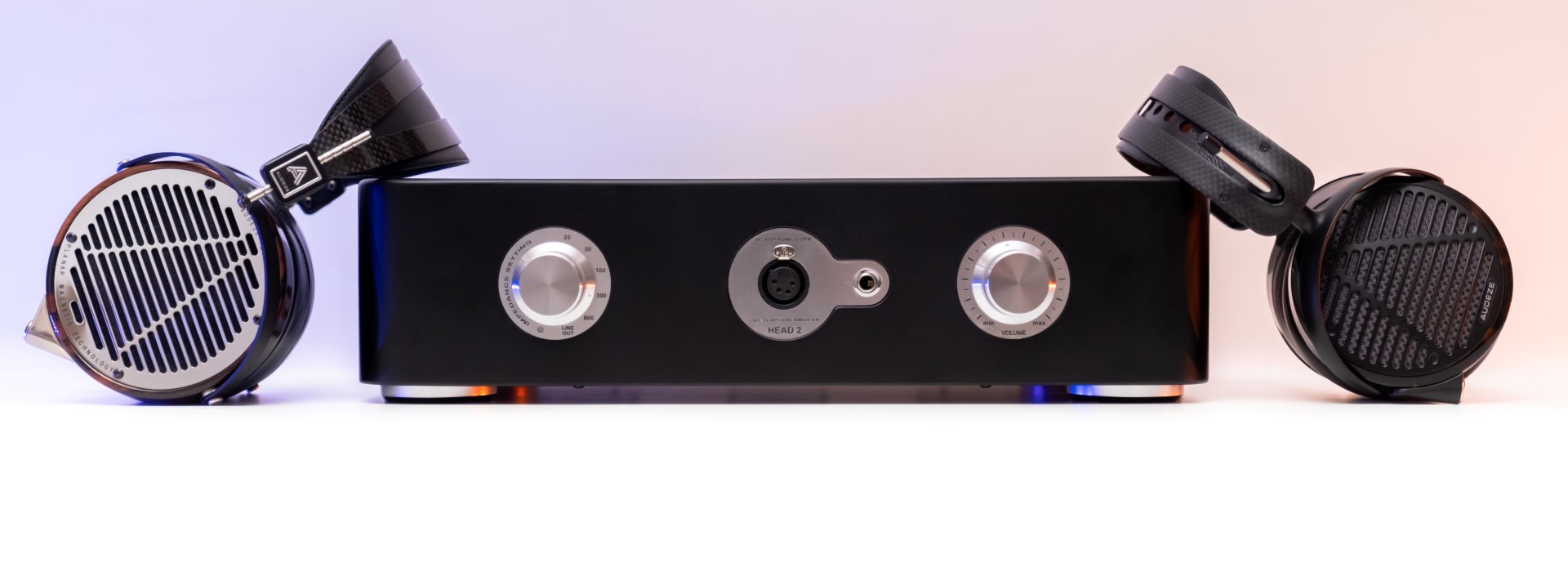
My Video Review:
Mankind always had this urge to discover new places, new sensations, breaking boundaries and going beyond limits of formal ideas. My journey started around December 2021, when myself and a bunch of audioholics started a long trip during which we’ve met Rockna and Audiobyte team. We checked some of their latest creations (that you can gaze upon in my latest Munich High-End Show 2022 report) and of course we hanged and shared a few secrets with some of the brightest minds of the industry. That was my second trip to Rockna and I already knew that we are going to test new loudspeakers in one of the best acoustically treated rooms I’ve heard and saw up to that point. We slowly started our listening session, trying a few bookshelves and standfloor loudspeakers, but instead of the usual back-in-black Rockna Rancor power amplifier, we saw a beautifully crafted tube amplifier, glowing so brightly in a dark environment, that it immediately caught our attention! It was exquisitely finished in a glossy white paint, but instead of sounding like a diva, it pounded our eardrums with an incredible force, while tightly controlling speaker drivers with an iron fist. The glossy white unit was later revealed to be a Trafomatic EOS power amplifier that left a positive mark on us all.
Just before continuing our journey throughout the heart of Bucovina, there was a lone matte-black box, wrapped in bubble wrap, weeping alone in a dark corner. I casually asked: What’s that one? That’s a high-end headphone amplifier from Trafomatic, Nucu replied back to me. My breath and heartbeats intensified, my eyes caught fire and from that moment onwards the rest was history. It’s interesting how the Universe has its own ways in changing somebody’s mind and old preconceptions about tube amplifiers, but more about that will be revealed soon. Fast forward to May 2022, I was honored in meeting the one and only rock star behind Trafomatic’s team of nerdy geniuses. Saša Čokić was humble, down to Earth and calm…as the silence before the storm. He’s a walking encyclopedia for all things that has to do with wine, vacuum tubes, amplifiers and guitars. Trafomatic’s core values are sound quality first, gigs and laughs, loud guitars in the background and the rest could wait and I’m glad that I was able to meet such an extraordinary man and ask a few questions regarding their amps.
Today I’m going to review their Head 2 headphone amplifier, that looks and feels like a proper tube-based headphone amplifier from any point of view. It provides 2 Watts per channel in 32 Ohms, there’s a gain factor of 26 dB and it’s capable of driving headphones ranging from 25 up to 600 Ohms. It features two 6H30P and two ECC88 double-triodes, there’s a pair of RCA and XLR inputs and the same number of outputs, as it can work as a dedicated preamplifier as well.
It fights in the heavyweight category with 10 kilos (22 lbs) of audiophile goodness and you can start drooling over as it will cost you a pretty penny. European MSRP sits at €3200 (including VAT) and it goes for $3200 in the United States.
If you’re a returning reader, then you already prepared a cozy chair and a refreshment and if you’re new to our independent publication, then please enjoy our customary way in dealing with audio-components. Head 2 will be put through its paces in both a headphone-based & stereo setup and in the latest chapters, it will be compared side by side with world’s best current production headphone amplifiers.

Unboxing Experience
When the delivery guy calls and asks for help, you know you’re dealing with a massive box and/or with a heavy-metal unit. I like them both and for me, the magic started from that moment. I’ve got a monstrous box versus the usual itsy bitsy headphone amplifiers and preamplifiers that I’m testing on a regular basis, sending a clear message of what should I expect.
Was it a single or was it a double-boxed affair? That’s right! It was a triple-boxed layout, as you can never be too careful when packing high-end electronics. Wrapping the unit in a black velvet pouch with a pair of white gloves on top, felt like unboxing a precious gem. Every unit crafted by Trafomatic Audio is handmade and hand assembled and I must confess that these guys are serious when it comes to packing and shipping out their gear. Obviously, there’s a right amount of hardened foam for a nicer protection and you can be sure that it will arrive in an immaculate condition to your front door.
The main unit reeks bad attitude with a matte-black paint covering its body, everything else felt sturdy and well put together, placing a bigger accent on attention to details. Since it’s just a headphone amplifier & preamplifier, the unit came with no more than a power cable and that’s all you need to start a listening session.

Design & Build Quality
Before getting the unit, I started doing my homework on Head 2, learning about its working principle, but also about Trafomatic and everything they do. I already knew what should I expect, but I believe its official photos aren’t doing it justice. It was bigger and heavier to what I was expecting and it looks to be up there with some of the biggest headphone amplifiers that I’ve tested so far. Flux Lab Acoustics Volot will outclass it on sheer weight and scale, but everything else as Ferrum OOR, Enleum AMP-23R and Burson Soloist 3X GT felt smaller and lighter weight by comparison. Head 2 weights about 10 kilos or 22 pounds, as an oversized and custom-made toroidal transformer will be powering the unit. About a third of its internal space is occupied by its power supply and filtering stage, another third houses an encapsulated (read: a secret recipe is hidden in there) analog input and output stage and the last part holds four tubes in place. While it might seem that Head 2 uses a fully CNC machined aluminum case, Trafomatic carved its case out of plywood, finely polishing and painting it with a gorgeous matte-black paint. They do accept custom paints and finishes and you can certainly unleash your imagination with a one-of-a-kind unit if you please. A glossy cherry-red Head 2 anyone? Even Iron Man is going to envy that one.
Its thick and heavyweight plywood structure wasn’t picked randomly, as it helps reducing micro-vibrations coming from within its tubes. Trafomatic bolted four massive feet that have soft foam inlays, that will lower remaining vibrations coming from cathode and anode elements. Lastly, there are three huge openings under the unit that are pulling cool air, exhausting it around the Trafomatic logo on top. Vacuum tubes are generating a lot of heat, more so than transistors and op-amps and that’s why extra care is needed, as a bad heat dissipation will shorten their service life. Luckily, heat goes up by itself (first laws of thermodynamics) and adding a few cooling fans was really, unnecessary.
Naturally, all its screws were moved underneath and to its back, for a sexier unit altogether. The whole body is rounded and smooth to the touch, it doesn’t have pointy edges and I must say that it started growing on me.
Trafomatic uses high quality connectors, switches, knobs and jacks and that was felt immediately after closely inspecting the unit. In the end, Trafomatic Audio showcased a high-quality craftsmanship in every possible way, putting a watchful eye on the smallest details, while inheriting brand’s traditional aesthetic features as double knobs on its front panel.
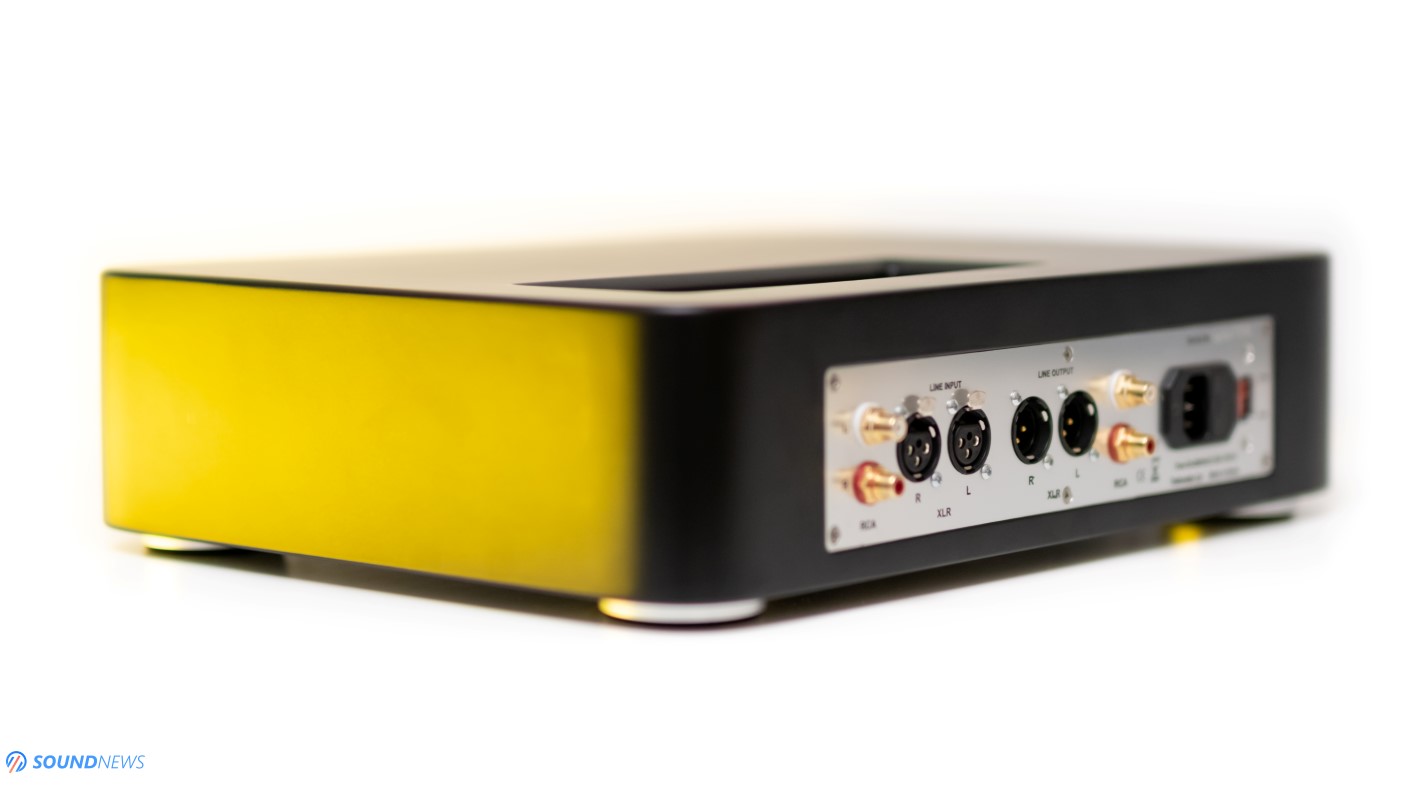
Controls & Connectivity
Since we’re talking about an analog input to output amplifier, you won’t find a lot of features, a display or a complicated layout. This is a straightforward, set and forget type of amp and it won’t confuse you with a lot of switches or hidden menus. On its front panel you’ll find a balanced 4-pin XLR and a single-ended 6.35mm headphone jack, an impedance switch is located to their left and a volume knob to their right. On the left side of the case a stealthy power switch is located and everything else was moved to its back.
Since it can work as either a headphone amplifier or as a preamplifier, you’ll find a pair of RCA and XLR inputs and a mirrored symmetry of analog outputs. An AC inlet, a voltage selector (230V or 115V) and a serial number are the last things you’ll see in there.
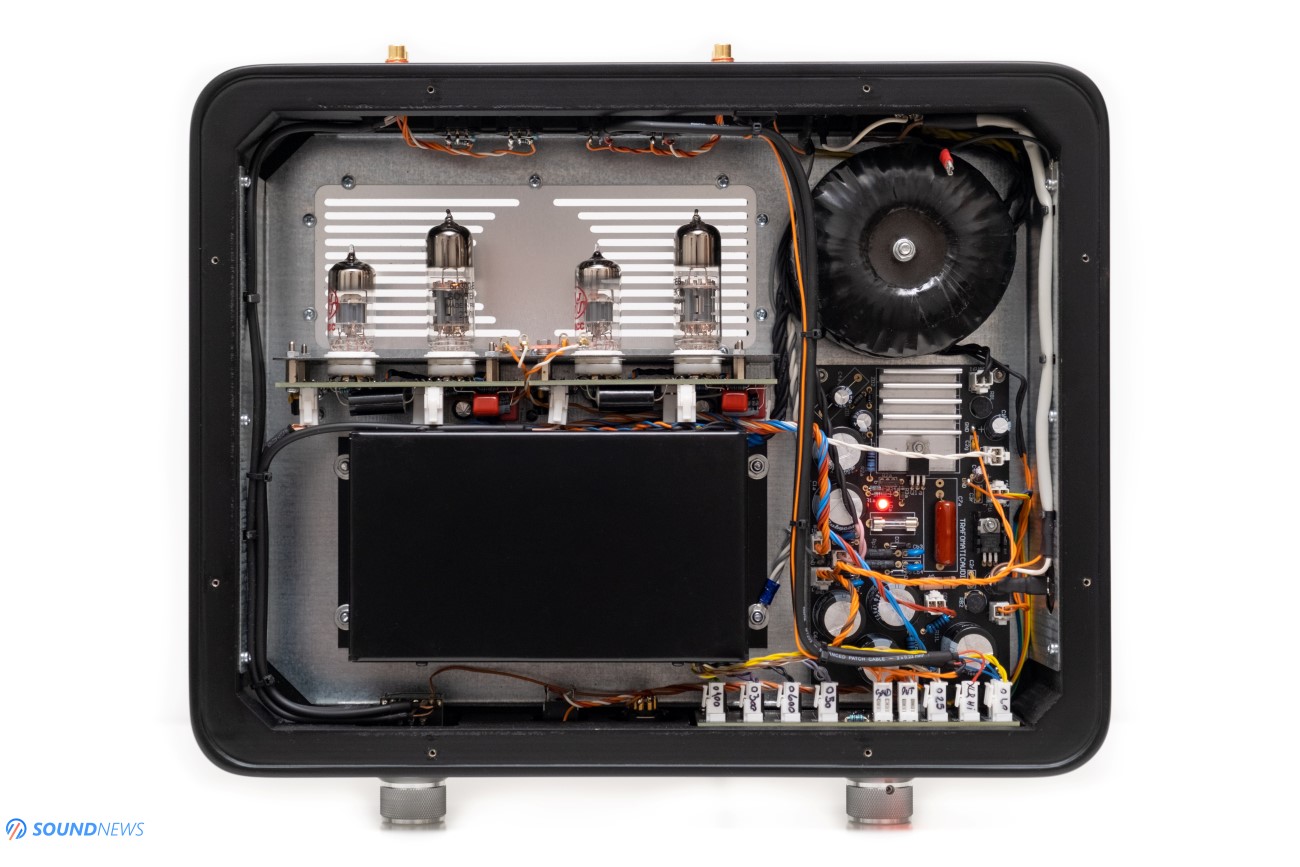
Under the hood of Head 2
You know what’s funny? After trying it for more than a month, I always thought that I was dealing with a hybrid transistor input, tube output amplifier…mostly because it didn’t sound like a traditional tube amplifier to me, but I was all wrong. Trafomatic Head 2 is a Class-A Push Pull amplifier that uses a single 6H30P double triode and another ECC88 double-triode per channel. In a Push-Pull amplifier, a vacuum tube pushes the output on the positive cycle and the other tube pulls the negative half cycle, working in antiphase. The two antiphase outputs are connected to the load, that causes the signal output to be added and distortion to be subtracted from each other. The benefits of a push–pull amplifier is that it produces more power and less distortion compared to a traditional single-ended design. Distortion can occur when outputs switch their places, as the hand-off is not always perfect, this is called crossover distortion. General distortion can be kept low by negative feedback and crossover distortion can be reduced by adding a bias current to smoothen the hand-off. There are three classifications of Push-Pull amplifiers as Class-A, Class-B and Class-AB.
Class-A are known as the best sounding ones, but such amps will cost you several times more, as about 70% of consumed power is transformed into heat, never to be used, hence tripling or quadrupling the number of components and case size for a similar power output to a Class-B amplifier. In such designs, vacuum tubes are always powered on, producing the lowest possible distortion and the maximum amplitude to the output signal. The same amount of current is flowing at the output, even if there isn’t an input signal, therefore big heatsinks and/or heat dissipation holes are mandatory, as a lot of power will be transformed into heat. As you can guess, the efficiency of such amplifiers is very low, sitting in between 25 and 30%.
Head 2 used uses an oversized in-house developed linear transformer, followed by a robust multi-stage voltage filtering – from which vacuum tubes are pulling power. It will output 2 Watts in 50 Ohms and about ~1.3 Watts in 150 Ohms (will double check on that later). At first, it might seem like a moderate output, but later that proved to be more than enough for all my headphones and more about that in a dedicate chapter.
I couldn’t take a peek inside its input and output stage, as I couldn’t open that metal cage, so I can’t tell you more about it. Head 2 is using current production 6H30P double triodes and another set of ECC88 double triodes. There aren’t that many substitutes for the first ones, but if you want the nicest ones, then Electro Harmonix 6H30Pi Gold Pin tubes are the absolute best (you can find them over eBay).
There are several substitutes for the last pair of tubes as 6922EH, 6DJ8, E88CC and all of them should work nicely. There are several current production ECC88 tubes from the likes of Sovtek, JJ Tubes, Electro Harmonix, Tung-Sol, Mullard, Ruby Tubes, TAD, Genalex, Sino, PSVANE, Gold Lion and many others. An important thing to note: if a single 6H30P or ECC88 tube fails on you, then you’ll need to replace that one and its twin brother with a matching pair of tubes, otherwise you’ll get higher emissions in one channel, sounding a bit louder to the other channel. There’s just a single gain setting of 26 dB and the output impedance sits at 6 Ohms via RCA and 25 Ohms via XLR when working as a preamplifier.

Test Equipment
Trafomatic Head 2 looks like a high-end tube amplifier and that’s why I decided testing it with every headphone I have at my disposal. I will be testing its noise floor with ultra-sensitive IEMs, I’ll move to portable over-ears and lastly, all sorts of desktop headphones will be hopping on my head, ranging from affordable dynamics to high-end planar-magnetics.
I wanted to squeeze the last drop of performance out of it and that’s why my PC was feeding a Singxer SU-6 DDC followed by a Chord Dave or Audiobyte HydraVox DAC, feeding all that goodness to the Head 2 itself.
There are several headphone amplifiers that could brawl with it for a few rounds and in the later stages of this review, you can expect select comparisons with some of the best solid-state headphone amplifiers out there.
Alright folks, my body and ears are ready for some music, so let’s hit some eardrums!

Sound Performance
I. Prologue
When Head 2 was knocking at my front door, I didn’t know what to expect. I wasn’t a huge fan of tube headphone amplifiers before, although I’ve owned quite a few Woo Audio, LittleDot and xDuoo amplifiers. While they all had interesting traits and unique skills, they didn’t sound as end-game material to me.
After seeing the sheer size of the Head 2 and everything that makes it tick, I already imagined a long burn-in process that would take me a few weeks at best or a few months at worst. Since we’re talking about a Class-A amplifier that dissipates a considerable amount of heat, I couldn’t leave it powered at night, fearing for the worst, meaning that I was using it for only ~10 hours a day. A few headphones will be following on the test bench shortly and that’s why, I decided doing the whole burn-in process while listening to it, which was a revelatory experience in its own.
After powering it on, Head 2 started showing me different faces every single day. On the first day, the ugliest and strangest face was revealed to me. Already knowing the sound of the Chord Dave and Sennheiser HD800S, I was surprised that the low-end was nowhere to be found! There was zero mid-bass and sub-bass delivery that made the whole affair plasticky and ethereal sounding. Sennheiser HD800S aren’t that weighty or full-bodied sounding by default, but with the Head 2, I’ve heard their worst performance yet. Midrange density was nowhere to be spotted, males sounded more like females and the only thing that was left, was a somewhat clear but scratchy treble performance, that was doing more harm than good. On the following days, Head 2 started riding a roller-coaster, as sometimes it was seriously altering the frequency response, jumping from warm to bright and vice versa. Don’t get me started with harder loads like Hifiman Susvara, as at around 2 O’clock position it started heavily clipping and distorting. The low-end felt twisted and disjointed, it was uncontrollable, so much so that only about two weeks later I’ve connected the same headphones again.
After putting about ~50 hours on it, I started getting a different picture, that didn’t remind about anything I’ve heard in the first days of use. Another 100 hours passed and it started settling down, showing me its beautiful face for the first time.

II. Preliminary Sound Impressions
It seems that I’ve had wrong preconceptions about tube amplifiers. There was a time in my adult audiophile life when I believed that the best measuring amplifiers would equal with the best sounding ones. Oh boy…how wrong I was. I’ve fallen into that trap so many times and it costed me a lot of time, grey matter and money…and I’m sure, you’ve fallen into that trap at least once. I’ve bought some, if not all perfect measuring headphone amplifiers out there, that were using noise shaping techniques so they could bring the noise floor down, while pushing micro and macro-details forward. Nothing wrong with that concept, except that when something is taken from your music with the help of clever techniques done in the analog domain, a chain reaction happens on a deeper level. Even top-grade amplifiers like Benchmark HPA4 that sounded squeaky clean and incredibly transparent, were no longer awaking emotions in me, music was no longer switching me on and I wasn’t getting goose bumps, not even once per week. All other instrument grade amplifiers of Topping, SMSL and Drop were doing the same thing, ultimately failing in sending a clear message and elevating my mood. At this point, I don’t find such amplifiers bright or edgy sounding, but I find them cold, dry and emotionless, which is the last thing you’ll want to happen with your music.
For no reason, I was thinking that tube amplifiers would be muddy, lacking resolution, lagging behind when it comes to speed, washing off nuances and layers, I was thinking about an overly smooth and relaxed sound signature, about a creamy and sweet midrange that would roll-off a big portion of the upper treble. I can’t believe how wrong I was and how misleading nasty measurements could really be. To me, Head 2 sounded more like an overly excited fully-discrete solid-state amplifier, than like an actual tube amplifier and I know how crazy that sounds. It’s incredibly linear in its presentation, but so incredibly mean and impactful down low.
It changed everything I knew about HD800S before and I wish I would be gravely exaggerating right now, but I’m not. HD800S sounded like I never saw their fullest potential before and the full story doesn’t stop at HD800S. If you think that Audeze LCD-4 are impactful and hard slamming down low (which they truly are), wait until you hear the Sennheiser HD800S on the Head 2 after at least three weeks of burn-in. Sometimes, HD800S are refusing to be tamed as a warmer and a smoother sounding rig would be necessary for the best results. The funny thing is that Chord Dave isn’t warm or smooth, nor Head 2 can be described like that and still…HD800S were sounding like I’m discovering their sleeping power for the first time. Hearing and feeling the energy that was lurking inside the HD800S was quite a revelatory experience. I’ve tried a bunch of end-game solid-state headphone amplifiers by now, but none of them were elevating the HD800S to such heights.
Sennheiser’s weren’t the only headphones that felt revitalized, as a few more followed the same path, even low-sensitivity planar magnetic headphones as Audeze LCD-4 and LCD-5.
The second surprise was hearing a detail retrieval and transparency that’s usually reserved for world-class fully discrete solid-state amplifiers. With all due respect to such units coming from Ukraine, Australia and Poland, Head 2 sounded clearer and more believable than either of those amplifiers. I was able to hear a few nuances, especially in the treble region that I was usually getting from an Enleum AMP-23R ($6,250) or from Head’s bigger brother, Trafomatic Primavera ($15,000 – soon to be reviewed). HD800S, Kennerton Rognir and Meze Elite started showing me a few layers and sub-layers of information that were usually reserved for TOTL solid-state amplifiers. While I wouldn’t call it more detailed sounding in the long run, it sounded believable, it sounded like real music to me. Guitars sounded as if there wasn’t an amplifier driving them in the first place and treble sounded as if I was standing in front of the drummer. I’ve got all the shimmer, impact and decay, but there weren’t traces of listening fatigue.
Third surprise, was experiencing a much bigger scale of my music. If the best solid-state amplifiers were giving me a solid 7 out of 10 scale and stage height, Head 2 was giving me at least a 9 out of 10, always pushing the sounds outside my head, way past my shoulder level, nicely positioning them in a huge bubble of sounds that was hovering around my head. Even the Audeze LCD-5, which are seriously lacking soundstage width and depth, started slowly growing on me, getting bigger sounding track after track, improving them on all three axes. The rest of my headphones sounded decompressed, big ‘n airy as if a pair of near-field monitors were playing in my vicinity. I wish this would be an exaggeration from my part, but this is exactly how Head 2 sounded with all my open-back headphones.
The fourth and last surprises were dynamics. You know, a very limited number of solid-state amplifiers were giving me the All-Inclusive treatment in terms of dynamics, getting all the speed and impact I could dream about, impressing a transient response addict as myself. How on Earth a 100% tube amplifier could keep up with wild electronica tunes and fast guitar solos is beyond my understanding. I’ve got all the speed that I dreamt of, quick shifts in dynamics weren’t slowing it down, but what was unexpected…was its majesty: Bass Slam! If Enleum AMP-23R, Burson Soloist 3X GT and to a lesser degree Ferrum OOR + Hypsos were wielding the mighty Mjolnir single-handedly, swinging it left and right with an incredible force. Head 2 was doing it two-handedly, swinging and pounding with a higher force than usual. Sometimes it was too much, especially with HD800S and you’ll never believe how much bass impact is still sleeping in there. With all due respect to the rest of the solid-state amplifiers, when it comes to dynamics…Head 2 stood head and shoulders above anything I’ve tried up to $5000.
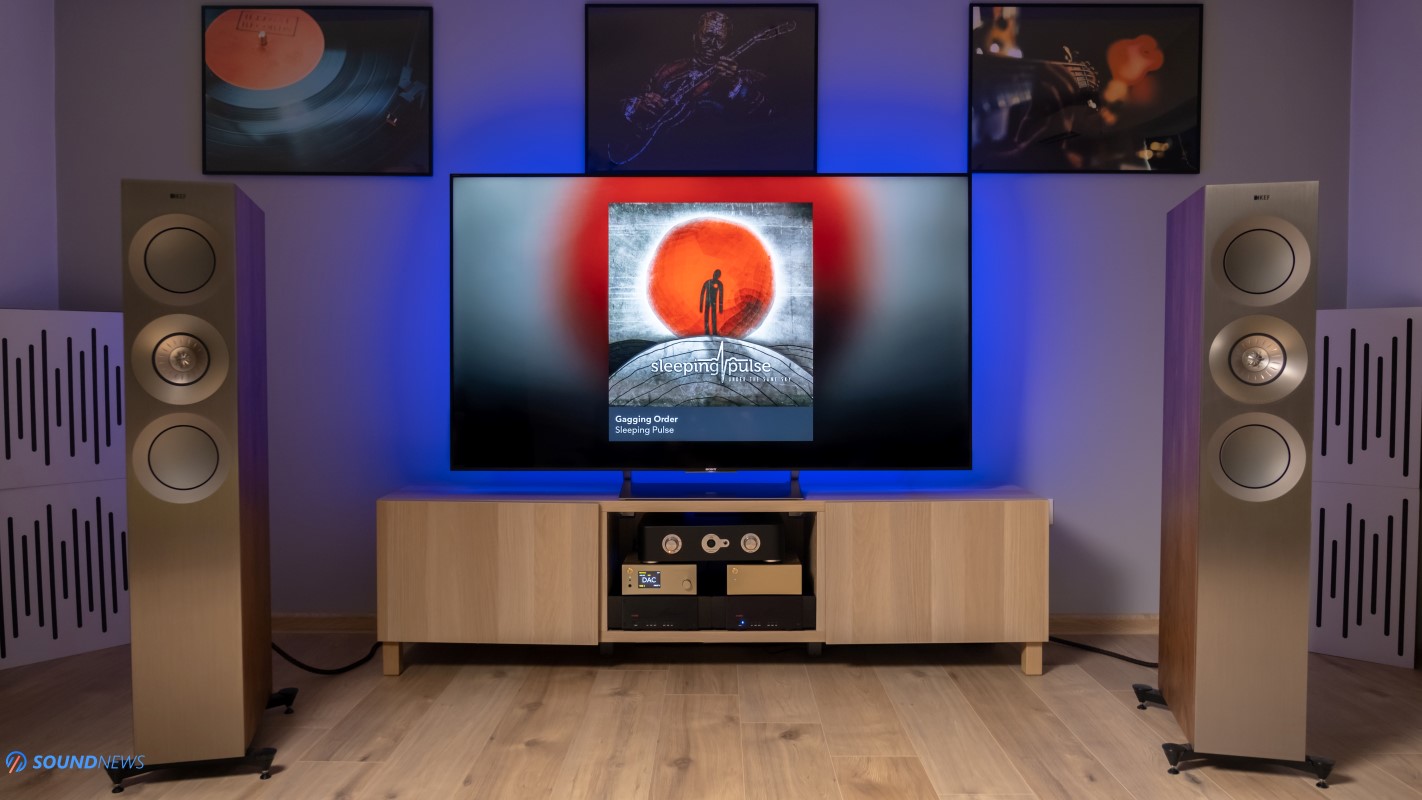
III. Trafomatic Head2 working as a preamplifier
In my stereo rig, Head 2 was put in between a Gold Note DS-10 Plus (that worked as streamer and DAC) and two Benchmark AHB2 mono amplifiers, driving a pair of KEF Reference 3 standfloor speakers. I’ve used quite a few preamplifiers before as Musician Monoceros, Benchmark HPA4 and Topping PRE90, but none of them revitalized my stereo setup as Head 2 did in just a few days.
Luckily, it didn’t increase the noise floor, it didn’t land an uppercut to the overall cleanness and transparency of the DS-10 Plus. The final result was a detailed and clean performance, while increasing the scale, the soundstage and dynamics of the Reference 3. When Hard As A Rock by AC/DC (Qobuz / Tidal) started playing, my kid started jamming left and right making funny faces, jumping and air guitaring like a true professional. I couldn’t leave him finish the solo alone, so I joined forces with an invisible drum kit, and I must say that I never heard this track as rejuvenated and raw as it sounded at that moment. We added a few more tracks, improving dad skills by tenfold in just a span of an hour. My former preamplifiers didn’t alter the final formula as much, but I’m reminding that this one wasn’t made as a me-too unit, pushing and pulling dynamics like crazy, exactly what was happening in my headphone setup. On top of that, Reference 3 finally spread their wings, sounding bigger, wider and completely 3D, something that never happened with my former preamplifiers.
People are sometimes describing their speakers with sounds coming from behind their walls and finally, I started to understand what they really meant by that. That see-through transparency and layering that I’ve felt with headphones, jumped into the living room, with notes coming from weird angles as if invisible bookshelf speakers were placed around the room. Everything was breathing, there was more weight, more music and more emotions, transforming a linear sounding setup, into a joyful sounding one.
I already had a decent amount of bass coming from the Reference 3, but that nasty Head 2 added even more bass energy and impact. At times, it felt overpowerful quantity wise and while that wasn’t so beneficial for me, it will be in a bookshelf setup that begs for a better low-end delivery.
I was confused at first…how a Push-Pull Class-A preamplifier can alter the tonality, dynamic range and the scale of the music, as I was still using the same streamer, DAC and amplifiers? It was beyond my understanding, but I was happy as finally, I was experiencing a different type of preamplifier.
The overall performance felt punchier, airier, more refined and when everything feels more pleasant, more focused and bigger on all axes, then you really can’t go back listening to your usual DAC and power amplifiers anymore.

IV. Background Noise & IEM compatibility
If you’re thinking about getting a Head 2 for the purpose of driving sensitive IEMs and portable over headphones, then maybe you should reconsider your choice, as it wasn’t designed for such easy loads. While 2 Watts of power on either of its headphone jacks doesn’t seem like a lot, a +26 dB gain could be too much with ultra-sensitive IEMs, as even a slight turn of its wheel could skyrocket the volume to dangerous levels.
I don’t know what special recipe Saša Čokić and his team are pouring over their custom toroidal transformers, as clearly its power supply and filtering stages were doing a great work in keeping the noise levels as low as possible, even in such a high-gain amplifier design. I am powering my stereo and headphone setup with passive power conditioners of Plixir Power, an Elite BAC400 sits in my headphone setup and an Elite BAC1500 in my stereo setup and I’m using them mostly to preserve dynamics as much as possible. With or without them, I didn’t observe notable changes, noise remained intact and costlier power cables weren’t changing its noise rejection performance.
The most sensitive IEMs that I have in my possession are FiiO’s FA9 used in their high sensitivity mode (113 dB at 1mW of power). I’ve connected them to 6.35mm jack which provides the same amount of power with its balanced jack, I’ve changed the output impedance to 25 Ohms and turned the wheel all the way down and it seems that Head 2 was almost dead-silent. Almost, because I could spot an increase of the noise floor only when disconnecting and reconnecting the IEMs back to the amp. Going louder on the wheel, didn’t increase it a single bit and at my usual listening volume, I simply couldn’t detect it anymore. There was less noise compared to a Burson Soloist 3X GT and Conductor 3X GT units and a little less compared to a Ferrum OOR and Hypsos, which seems like an extraordinary noise rejection for a tube amp.
The highest sensitivity desktop headphones that I have at my disposal are my co-designed Apos Caspian (115 dB at 1mW of power), but luckily, at either volume level, I couldn’t detect traces of noise, let alone an actual noise floor. I’ve went louder and louder again, but my detective skills couldn’t sniff out traces of noise. I was complaining before about moderate hiss levels with tube amplifiers of all sorts, but the Serbian beast appeared cleaner, drowning the noise for good. Considering the extra care that went into its power supply and filtering stage, I’m not surprised hearing a dead-silent performance with all sorts of desktop headphones.
I redid my tests in a stereo setup, Ferrum OOR went out and Head 2 took its place in between my source and two Benchmark AHB2 mono amps. KEF’s Reference 3 sounded exactly as I know them to be, their speedy presentation and transparency remained intact, with the exception that Head 2 further improved their layering, my room doubled its size with a flip of a switch, getting more micro-details and a fuller bodied bass, compared to a Ferrum OOR – which was already a warmer sounding preamp to my former Benchmark HPA4. KEF’s UNI-Q driver arrays will immediately pick up an increase of the noise floor, but that never happened, getting a similar performance to an upper-class preamplifier.
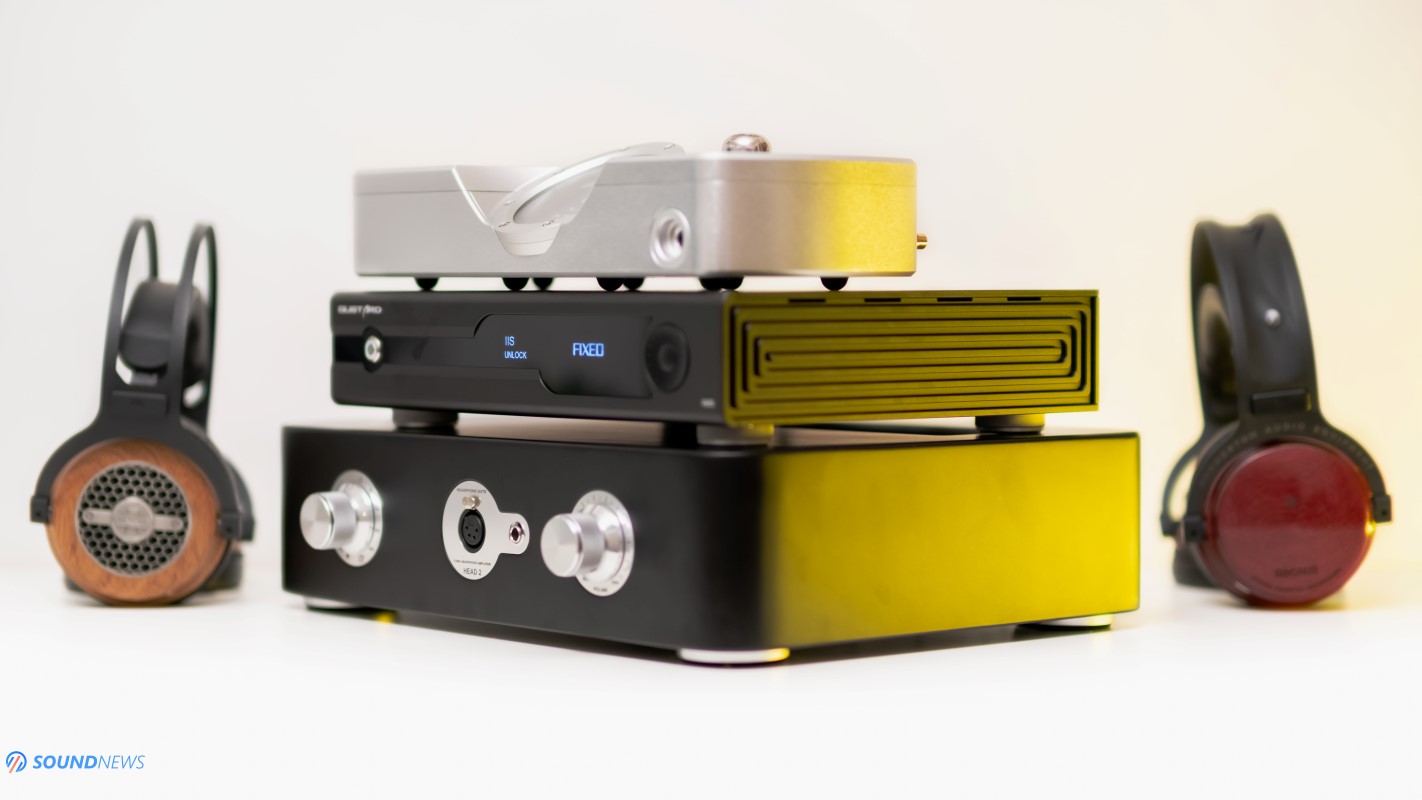
V. Power Output
When I’m thinking about its power rating, 2 Watts per channel in 32 Ohms doesn’t sound like an overpowerful amplifier, right? I wasn’t expecting it to drive the Audeze LCD-4 and LCD-5, let alone the Hifiman Susvara or Abyss AB-1266.
When I just received it, I’ve immediately powered it on and after about two hours of initial warm-up, it was heavily clipping even with the Audeze LCD-4 at around 11 O’clock on its volume wheel. It didn’t make sense to me…11 o’clock and it was already running out of steam? Something wasn’t right. A few days passed and LCD-4 weren’t dead sounding anymore, dynamics made their appearance felt and I’ve got a much better control of the drivers. It wasn’t effortless and tight at that point, but it was going into that direction day after day. Two more weeks passed and you can discard everything I said about the LCD-4, as from an ugly duckling, LCD-4 transformed into a beautiful white swan.
LCD-4 didn’t only sound great with no distortion or crooked dynamics, but they sounded incredibly alive and impactful, delivering critical hits every time dynamics were trying to reach their peaks. LCD-4 became even livelier compared to solid-state amplifiers that were smoking near it in a corner. This can’t be right! A long comparison session commenced and sure enough, Head 2 came out as one of the most impactful amplifiers I’ve had the pleasure of testing. How a tube amplifier can deliver such powerful kicks and instant shifts in dynamics is still beyond me. The only explanation I have is that its Class-A working mode and a higher voltage coming from my DAC (6V versus the industry standard 4V) made a substantial difference versus my former tube amplifiers. As you can imagine, every single headphone from my collection sounded that way. From high-sensitivity dynamic headphones, to high-impedance ones and then to low-sensitivity planar-magnetics, there wasn’t a headphone that didn’t put my jaw on the floor.
Head 2 was tightly controlling their drivers, delivering as much power as they needed, with a massive headroom always remaining on tap. With HD800S I couldn’t go higher than 10 O’clock, with Kennerton Rognir and Erzetich Phobos V2021 the same story repeated itself, only with Audeze LCD-4 and LCD-5, I needed to go a little louder, but still, I never went past its 12 O’clock position, suggesting that dynamics would never run out of breath.
Then out of the blue, a pair of Hifiman Susvara hopped into my hands, and I was talking to myself: “This is it! I found your Achille’s heel; you can’t stand a chance versus these.”
I refuse to believe it, how’s that even possible? It was because I was running 6V via XLR, instead of 4V or a powerful output stage was doing it? Tens of question started hovering around my head, as Head 2 was driving the damn Susvara to what I would call as close to perfection. Head 2 was incredibly close to the absolute best headphone amplifiers that mated well with Susvara. With only 2 Watts under its hood, it was outperforming a 16 Watt Flux Lab Acoustics Volot, which was less impactful with rock and electronica tunes.
Susvara were driven close to their maximum and I was getting easily a ~94 out of 100 performance, which just outperformed a few statement solid-state amplifiers. The only amps that were outplaying it on Susvara, were Enleum AMP-23R ($6,250) and Trafomatic Primavera ($15,000), that were squeezing the absolute best. If you’re wondering, I was at around ~2 O’clock position with Susvara, still leaving a substantial amount of headroom on tap. I don’t think you can ever crank that volume higher, as my ears were already in pain. As I’m typing this, there isn’t a more demanding current-production headphone, suggesting that Trafomatic’s beast will easily drive your entire headphone collection without breaking a sweat.
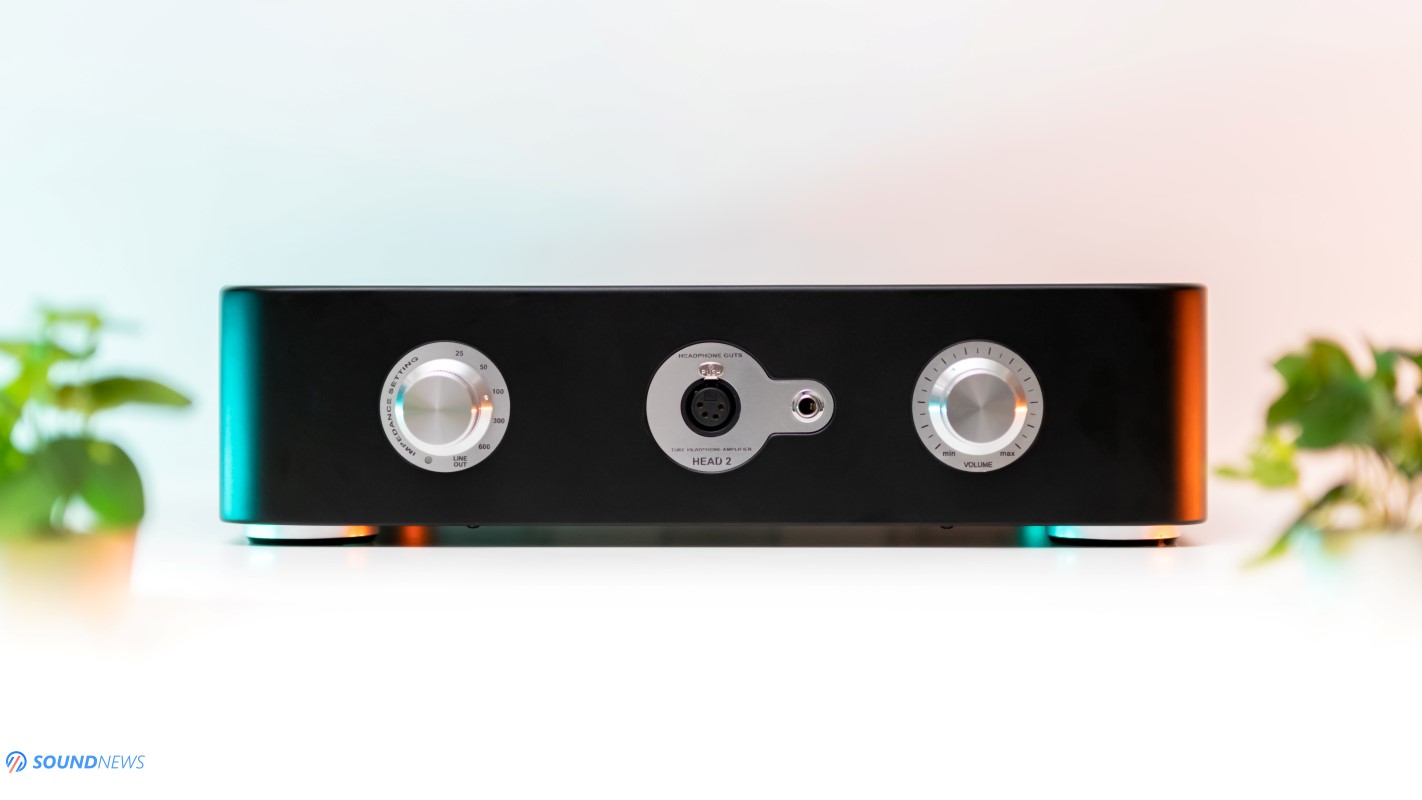
VI. Transient Response
It still boggles my mind, how a tube amplifier could deliver the speed and impact that I was craving for? I can’t explain this phenomenon, maybe Trafomatic can explain from where that energy oozes from, as clearly up to $5000, I didn’t experience a more energized headphone amplifier.
Usually, I’m getting the speed (with entry to mid-level amplifiers) or the slam (Class-A amplifiers for the most part), and only rarely I’m getting them both. When that happens, I’m usually looking at a big, heavy, hot to the touch and expensive amplifier. Head 2 is certainly part of this category, but knowing how easily it outperformed its closest rivals, I don’t find it expensive anymore. There were two units that were meaner, faster and punchier sounding, but those were a lot more expensive. I’m still wondering about the secret recipe that Trafomatic holds with this one and maybe it’s better leaving that mystery unsolved.
It doesn’t mean that the rest of the Class-A mafia weren’t as nasty and mean sounding anymore, it’s just that Head 2 was better at elevating my mood and self-esteem. When you are powering the Head 2, you’re instantly forgetting about boring and flat sounding amplifiers like the ones carrying THX-AAA (Feed-Forward Error Correction), NFCA (Nested Feedback Composite Amplifiers) and PLFC (Precision Linear Feedback Circuit) tech. Head 2 doesn’t care about the highest SNR or about the lowest THD, above all and everything, it cares about making you feel good while listening to music. It didn’t elevate or bury party of the frequency response, it was making everything juicier, fuller and meatier sounding than ever before. Sometimes it feels like listening to unamplified music in a cozy venue or concert hall, hiding microphones, amplifiers and speakers behind a curtain. It’s difficult describing its sound with mere words, but it feels unrestrained and effortless for the most part. I can’t do anything while listening to music through it and that’s probably the highest praise I can attribute to it.
Since Joe Barresi just remastered an old ‘n legendary heavy-metal album that introduced me to the world of Dio. I decided giving a try to the good old Holy Diver by Dio (Qobuz). Joe removed traces of noise; all the grain and mastering errors went out and we’re getting a much clearer picture. Dio’s classic Holy Diver seems to be enjoying a revival on streaming platforms, on par with Kate Bush’s – Running Up That Hill. Everything punches with clear and balanced vigor. The drums pound like a boxer shrimp, the guitars surge like an angry stampede, and I can tune into instruments individually or appreciate them together. Ronnie James Dio’s voice wasn’t muted anymore, it felt more present and there’s no forgetting that dark vibe once you hear it properly. I loved the slower syncopated notes, but also when things speed up. Joe demonstrated strong mastering skills, cultivated through proper mixing. Does the Serbian amp know how to rock…hard? Oh, it does! It does it so well that a head-bang fiesta commenced shortly, infusing raw energy where there was none. Even linear sounding cans as HD800S became raw and impactful and I couldn’t ask for more.

VII. Soundstage & Depth
Putting aside its bad boy attitude, there was something else that stood out above a good number of amplifiers and that was layering, depth and soundstage that stretched wider in all directions.
Sennheiser HD800S are already big sounding on their own, but with the Head 2, it was like listening to a nearfield stereo setup. Besides putting music on repeat, I’ve watched a few movies with it and there were at least two times when I checked if somebody entered my office. Sounds were bouncing around my head, coming from different altitudes, even from behind my back, which seemed off at first, but interesting and desirable later on. Trafomatic Audio endowed it with special powers and one of those is the feeling of air all around you.
With all due respect to Audeze and to their engineers, LCD-5 is lacking an open wide soundstage, they sound closed-in and claustrophobic most of the time, even compared to closed-back headphones as Kennerton Rognir. I like a lot of things about them, but can’t get over their two-dimensional sound that puts everything on a sheet of paper. Head 2 was gently improving their layering and I started looking at a bigger picture with notes popping around my head. There are plenty of people that enjoy the LCD-5 for their excellent timing, transparency and detail retrieval and if you need a better layering and a bigger scale, then Head 2 looks like a winning ticket, expanding their sound to the sides, while frontally adding more depth.
Head 2 took the best parts of the LCD-5 and improved the less impressive ones, pushing it closer to the LCD-4 when it comes to spaciousness and layering. Trafomatic’s beast was doing it with a nonchalant ease, as a few amps sitting in its vicinity felt smaller sounding by comparison. It’s clear that powerful tube amplifiers have the right genes and the know-how in expanding the music to its limits. In the end, cozy tunes will still sound cozy and intimate, with just a bigger void space in between the notes. While older blues impressed the hell out of me, live albums caught me off guard and blew me away.
Even bad mastered, overly mixed, muddy sounding and non-audiophile records of Misfits and Ramones started having a different meaning altogether. Blitzkrieg Pop didn’t push the vocal performance closer, but it stuck in my head with a vivid vocal performance, I was humming the damn song for the remaining day. How about Last Caress, which still sounds like throwing mud towards my face? Interestingly, it became cleaner and could look deeper into the mix. Drums didn’t sound like a huge blob of nothingness, there were a few things that I could finally discern, like experiencing a good remaster. Local folk rock of Zdob si Zdub felt soothing, real and alive, delivering clean cymbals and impactful snare drums hits. I almost forgot how defined drums can sound in a proper setup. Head 2 was gently decompressing every track with utmost accuracy, without breaking an invisible bond and I wish at least a few solid-state amplifiers could have the same skills…Alas, that’s rarely the case.

VIII. Detail Retrieval & Transparency
It seems that Trafomatic Audio did everything they could in drowning the noise floor as much as possible, elevating micro and macro details and I wasn’t forcing myself in hearing low-level information. From a plethora of all tube and hybrid amplifiers, Head 2 came out as the cleanest sounding one and that shouldn’t come as a surprise, as it’s also the most expensive one too.
Susvara still sounded like Susvara and HD800S were still unearthing gobs of details behind my tracks and I never felt that something was missing from my tunes. I’m sure that Chord Dave and Audiobyte’s HydraVox were giving a huge helping hand, as Head 2 always sounded impressively clean and detailed.
After seeing all its faces, I’ve observed that even without burn-in, it was rendering treble with utmost accuracy, while never adding an over sharpness filter on top. That nasty ringing that still plagues most of THX-AAA amplifiers was nowhere to be spotted in here, trebles sounded clean, defined and transparent, while rendering natural leading edges. This is not your regular tube amp that rolls-off treble and rounds the whole frequency response at both sides, it’s far from that. Head 2 was putting a gentle accent of the intricacies happening up top, without making it a burden, even with hotter sounding headphones as HD800S, Susvara and HE1000SE.
While detail retrieval was impressive from day one, what really stood out for me was…transparency. Not only I was able to hear the smallest nuances hiding in the corners, but I could reach deeper into my tracks. I could stay near the drummer and feel every stroke of his drum sticks, I could feel the last violin player sitting behind a crowded orchestra, I could hear a dude screaming in a live concert and guitar players hitting their pedals with a bigger force. I could zoom in and out easier with this amplifier, something that wasn’t happening as easily with solid-state amplifiers. While I have experienced a slightly better detail retrieval with a few solid-state units, I don’t believe I’ve experienced such a see-through transparency before.
The usual over-sharpness that I was getting from the biggest majority of THX-AAA and NFCA amplifiers was no longer an issue, there was no glare, no brightness, no fake ringing, no nothing. Just a pure and real representation of my music, without making it sharper or smoother sounding.
Undertow by Pain of Salvation (Qobuz / Tidal) is such a mesmerizing track on its own, I can never get bored listening to it even through a set of IEMs connected to a small USB-C dongle. Via Head 2, both guitars felt so zingy and alive, carrying a heavier tone with every vibration. Backing vocals took a step forward and I could finally hear their grittiness and their lower pitch. Snares dropped bigger bombs on my ear-drums and don’t start me with bass guitars that added scary tremors around the 2 minute and 19 second mark. Even if it gets busier towards the end, everything still felt well arranged and perfectly defined, playing in their own bubble of sound. Musical notes were bumping into each other, but I could still follow their trail with utmost accuracy, reminding once again that we’re dealing with a clean sounding amplifier that wouldn’t choke dynamics even with harder tasks as Hifiman Susvara.
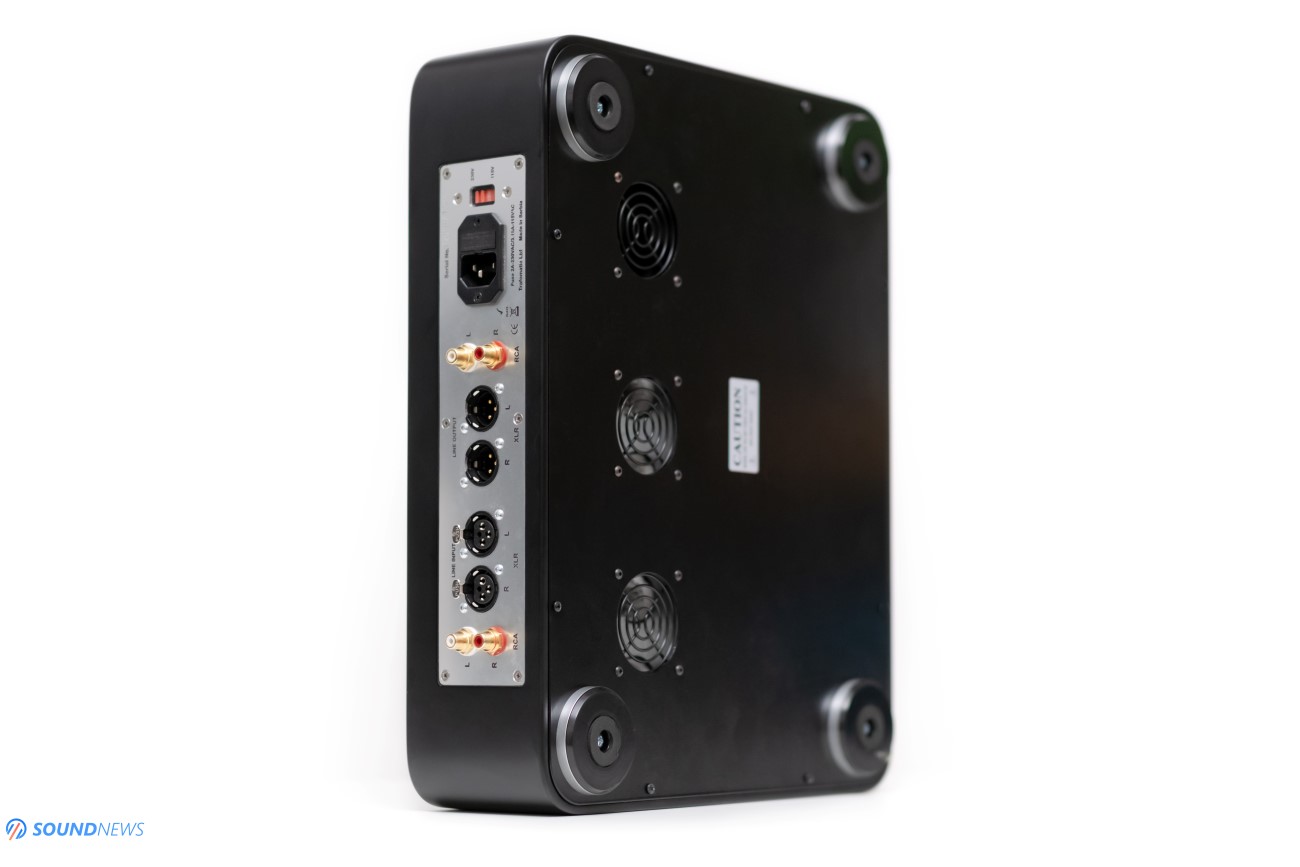
IX. Frequency Response
A. Bass
From a substantial number of headphone amplifiers that were tested around here, the one and only that changed its tonality from the first to the last day, was undoubtedly the Head 2. It was incredibly shy and lightweight in the first days, everything sounded quite thin and lifeless and I could hardly connect with my music. Dynamics weren’t even close in reaching their peaks and there was little to no sub-bass definition, that I started thinking that maybe I’ve got a defective unit. A few weeks passed and I was already looking at a scarier creature that was showing me its teeth and red eyes after powering it on. After it settles down, expect the unexpected with the Head 2, especially when it comes to bass. You’ll hear it in places where it shouldn’t be. I mean, I shouldn’t head-bang on Moonlight Sonata by Beethoven like I was listening to angry metal tunes, right? But that’s precisely how it renders everything, gathering more rumble even around piano notes. It does sub-bass and mid-bass just fine, it does it often and it does it in an impactful manner. It’s a high-quality type of bass too and you’ll definitely get gentle murmurs with bass guitars and a delicate decay with cellos. Sometimes it might appear like there’s more bass quantity wise, as it feels nastier and more playful, trying to get a bigger attention. If bass is your thing, then you should definitely check this bad boy sing on electronica tracks, pulling and pushing those membranes like putting Hercules on a drum kit. I’m not getting a warmer or a smoother bass delivery and more like a bolder and punchier bass compared to the usual tube amplifiers. Mind you, this still happens in its stock form and I’m pretty sure that some nicer Gold Lion or PSVANE triodes would further deepen the low-end…which scares the sh!t out of me only thinking about that.

B. Midrange
Instead of an overly warm, smooth and lush midrange delivery, I’ve got a pure representation of the mid tones, with an added substance to the whole affair. Some amps are putting more meat on the bone; others are pushing the vocal performance a little closer, but this time around I’ve heard an honest representation of the midrange, while still retaining an organic nature. Surprisingly, I would neither call it meaty sounding, as it leaned towards fully discrete solid-state amplifiers, preserving the weight, the innards and the naturalness of the notes. In my view, midrange came in right doses, while lightly boosting its saturation. There is obviously nothing of that mellow, muddy and slow pace of entry to mid-level tube amplifiers, as Head 2 is a nimble, wild horse regardless of the load. It will keep up it with the fastest tunes and it will be sending shivers throughout your spine. There was never a hardness to the vocal performance, creating a strong foundation for an emotional performance. Trafomatic’s second best headphone amplifier sits on the opposite pole to a Benchmark HPA4 ($3000) and to all other THX-AAA amplifiers that passed through my hands. There wasn’t even a trace of dryness or thinness, as everything that appeared on my playlist was putting me instantly into a relaxed state of mind. After going through my old blues collection, things started to make sense to me, it just felt right from the get go, clicking into place like a missing Lego piece.
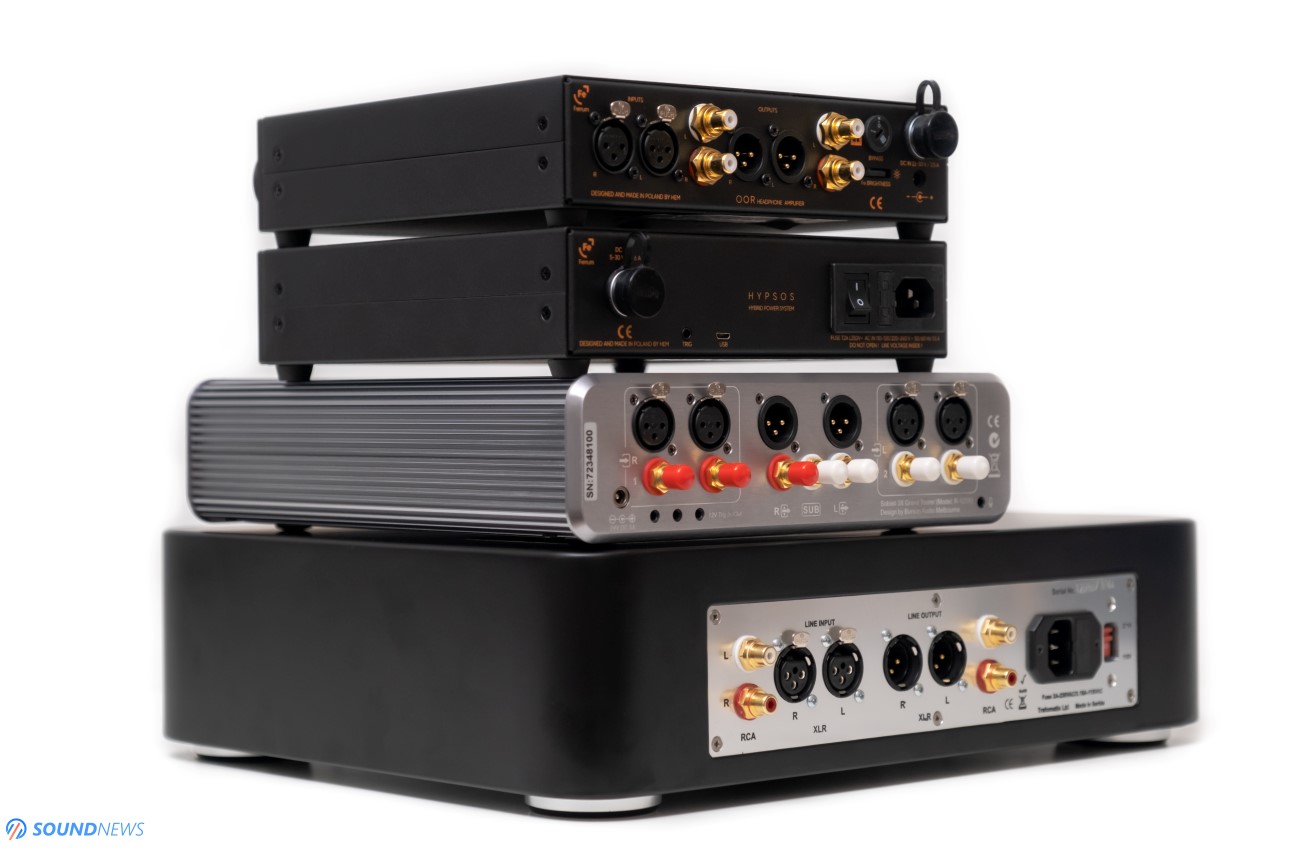
C. Treble
I’m still describing a unit that tries putting as much information on a plate, without altering signal’s purity or weakening a perfect balance from the frequency response. Subjectively speaking, the biggest surprise was its treble performance that felt clean, defined and extended past top-octave, without slashing portions of its lower or upper treble. I’ve got cymbals that shimmered in a natural fashion and decayed at the right time. I’ve got powerful snare drum hits that weren’t shy in showing off their true nature, I’ve got metallic bells that were getting my full attention without making my ears hurt. Head 2 isn’t the usual glass canon amplifier that fires as much energy in all directions, without holding everything tightly together. This is still a highly technical sounding unit, that won’t sugar coat your midrange, that won’t embalm the low end or limit the treble in any way. This fellow isn’t rolling-off treble information as it might happen with usual tube amplifiers and you will be getting a higher presence to say, a Woo Audio amplifier. Overall, I would describe it as clean and believable, never leaning towards the dark or bright side.
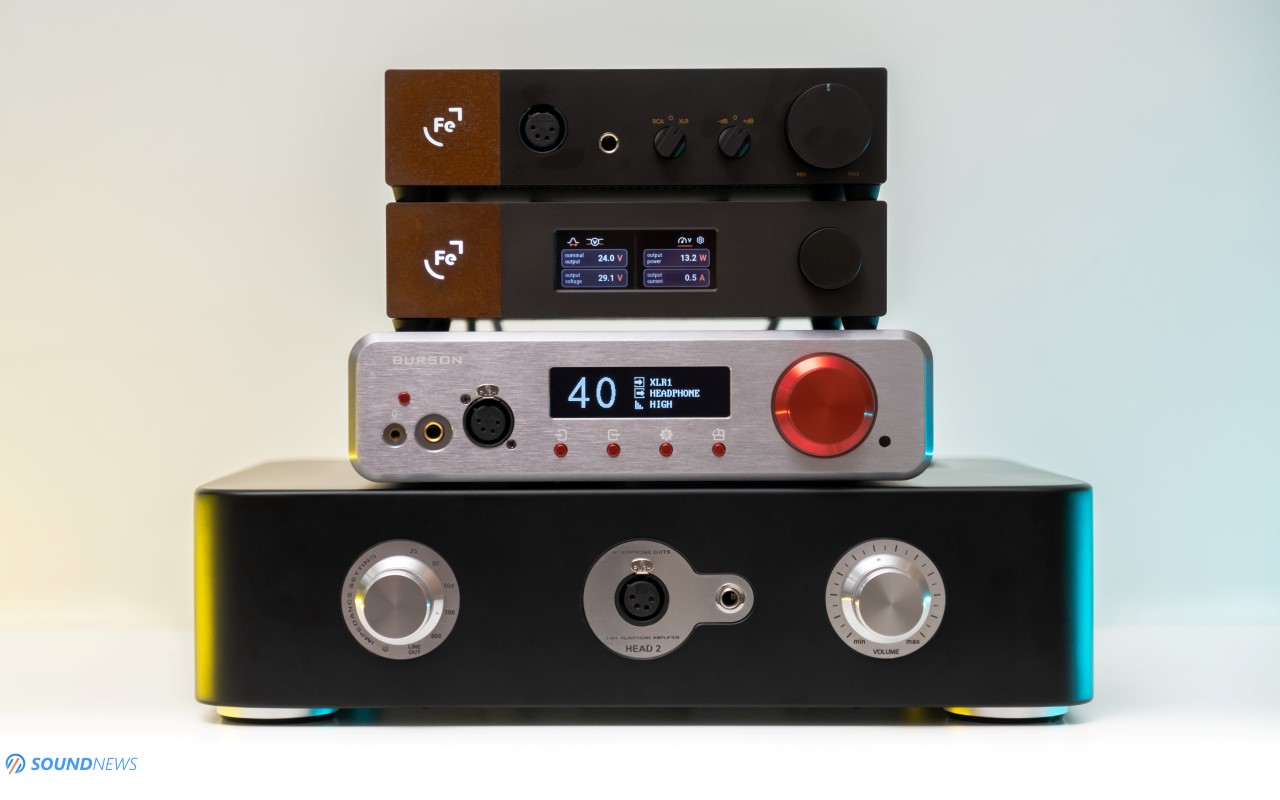
X. Comparisons
Trafomatic Head 2 ($3200) VS Ferrum OOR + Hypsos ($3190) Vs Burson Soloist 3X GT ($2799 with Super Charger 5A)
If you’re a manufacturer and my words are going to offend you, then please accept my apologies, but understand that I need to stay true and honest to my readers and viewers. My opinions are always my own and that isn’t going to change anytime soon. I’ll be as objective as possible, without taking into account my personal preference. If you’re an avid reader, please enjoy the showdown.
All my comparisons are done in the morning, after a hot shower, two poofs of Audispray, a hot coffee and after carefully volume matching them at 90dB with a proper decibel meter. These things are mandatory for me, as I know that my hearing and mood would be at its prime.
Before putting them in the octagon, I believe all three deserve their high-end status. While there were differences and major changes in their tonalities, with different philosophies behind them, they all performed at the highest level.
1. Design & build quality wise all three are quite impressive, but I find the Ferrum stack more appealing and beautiful to look at. That Hypsos adds a lot of value, as I’m constantly looking at its screen and power gauges. Soloist GT comes next, those Ferrari red accents make it stand out from the crowd and I’m placing the Head 2 on the third place, only due to its sheer size and stealthy look.
- Soloist GT: 9.5
- Ferrum OOR: 10
- Head 2: 9
2. When it comes to features, this is where the Soloist GT plunges forward, as besides a three-way crossfeed circuit for a speaker like experience, there’s a fully-fledged preamplifier inside, there are two sets of XLR and RCA inputs (so helpful when doing DAC comparisons), a sub-woofer output and you can even use your headphones with a sub-woofer if you will. Ferrum stack comes second, as besides working as a preamplifier, Hypsos lets you connect it to almost any DC powered audio component, individually adjusting its voltage output. Head2 is still impressive on its own, as besides a no-strings-attached headphone amplifier, it can still work as a tube preamplifier – which is something a lot of folks will be using for the fun factor (me included).
- Soloist GT: 10
- Ferrum OOR: 9.5
- Head 2: 9
3. When it comes to sheer power numbers, Ferrum stack is providing 8 Watts in 32 Ohms, Soloist GT would provide around ~6 Watts in the same impedance and Head 2 smokes alone in a corner with only 2 Watts in the same impedance. However, when Hifiman Susvara started playing, I didn’t feel that either or these were lacking oomph and dynamics. Nonetheless, I will be ranking them according to their power ratings.
- Soloist GT: 9.5
- Ferrum OOR: 10
- Head 2: 8.5
4. When it comes to timbre/tonality, this is where Head 2 and the Ferrum stack stood out immediately to me. Head 2 was the scariest animal when landing precise & powerful bass notes, with just a mild midrange boost, while never intervening with the top end. Interestingly enough, Ferrum stack was warmer sounding, infusing more midrange presence, putting more meat on the bone, while completely shelving brightness for good. OOR was creamy and sweet sounding, transforming lower tiered Hifiman and upper class Sennheiser cans into something else. If you like hearing a warmer, fuller-bodied and a more organic presentation, then the Ferrum stack would be more to your liking. Soloist GT and Head 2 are going with a reference tuning, messing a lot less with the frequency response, with the exception that Trafomatic felt purer, without straining the listener that much.
- Soloist GT: 9
- Ferrum OOR: 10
- Head 2: 9.5
5. When it comes to soundstage, after about an hour of warm-up, nothing came even remotely close to that vast, open and wide sound of the Head 2. It wasn’t only bigger sounding on all axes, but also deeper and completely effortless all the time. The difference wasn’t small by any stretch of my imagination, as Head 2 was massive sounding, adding a soundstage switch to some of my headphones, Audeze LCD-5 feels like a very good example. Soloist GT was smaller sounding, but it still pushed the music outside my head, never intervening that much. Ferrum OOR wasn’t closed-in or on-stage with neither of my headphones, but it couldn’t portray a massive scale when big orchestras and live recordings started playing.
- Soloist GT: 9
- Ferrum OOR: 8
- Head 2: 10
6. When it comes to transients and dynamics, contrary to their power ratings, Head 2 sounded the wildest, always pushing dynamics like a rollercoaster. It added such a powerful bass delivery, that several headphones couldn’t be recognized anymore. HD800S started smashing and pounding like Tyson Fury in its prime time. That was felt with reference recordings, but also with oversimplified material as electronica or rock. OOR felt only by a hair more energized and punchier sounding to the GT, but never being as explosive as the Trafomatic. GT was no slouch either, I always liked Burson creations, mostly for their fast tempo, but in this comparison, it was slightly lagging behind.
- Soloist GT: 8
- Ferrum OOR: 8.5
- Head 2: 10
7. When it comes to transparency and detail retrieval, this was by far the hardest test, as all three are sounding incredibly clean and resolute. Still, on reference recordings Head 2 went ahead and delivered a clearer and more importantly: a see-through presentation that let me scan my entire music collection with so much ease. Soloist GT came next, having stronger contours & leading edges, a really good detail retrieval, but a somewhat bothersome upper treble with a few headphones. With OOR, some notes were coming in a calmer, rounder manner, like applying a smoothing filter all over my music. OOR was slashing bits of information and it appeared muddier sounding to the rest of the gang.
- Soloist GT: 9.5
- Ferrum OOR: 8
- Head 2: 10
8. Final Results
- Burson Soloist GT: 64.5 points
- Ferrum OOR & Hypsos: 64 points
- Trafomatic Head 2: 66 points
Even if their numbers came extremely close, I wanted to highlight that these are still different sounding amplifiers in every possible way and they all have their strengths and weaknesses. If you’re into linear and bright sounding headphones and want a bit more life in that midrange, while slashing treble glare out of existence, then the Ferrum stack will provide you exactly that. If you need a slight bump in the bass and treble quantity, searching for one of the cleanest Class-A solid-state amplifiers out there, that’s still fun and engaging whilst driving your entire headphone collection, then Soloist GT sounds like a love affair. Lastly, if you need a neutrally tuned amplifier that doesn’t mess with frequency response, that sounds effortless, big and enveloping, while pushing dynamics and improving the transients, then Trafomatic’s Head 2 will be right up your alley. No matter from what angle I’m looking at, Head 2 stood out as a better sounding unit, proving that specs aren’t always that important.

Epilogue & Conclusion
It goes without saying that Head 2 is a phenomenal sounding headphone amplifier and preamplifier. Everything I knew and imagined about tube amplifiers was shattered into tiny pieces, thanks to Head 2 and to its way in dealing with my music collection. I will never forgive Trafomatic Audio for altering my (wrong) preconceptions about tube amplifiers.
For me, the biggest surprises were an immaculate transient response and detail retrieval. Pounding harder than some of the best solid-state amplifiers, while sounding noiseless and clear as the blue sky, was something that I never dreamt in getting from a tube amp. Forget everything you know about tube amps young padawan, Head 2 was silently shushing into my ears, as it delivered an outstanding performance on all fronts.
Trafomatic’s team doesn’t care about perfect measurements, but they do care about the act of music listening, about going to sleep at 3AM and you probably won’t finish an album without tribal dancing around it.
If you’re planning on driving harder loads as Hifiman Susvara, HE-6 or Abyss AB-1266, after experimenting with a few digital sources, it seems that a hotter signal coming from your DAC (in between 5 and 6 Volts) worked better, pushing everything to its limits, providing a bigger headroom and a higher power output in the process.
It sounded equally impressive as a preamplifier, adding plenty of oomph and energy down low, that I started exchanging the long ports of the Reference 3 with shorter ports, so I could tame and better control the low-end delivery. The scale of the music was something to behold, as it went beyond the walls, delivering a true holographic experience that I don’t remember getting from my former preamplifiers. The only cons I see with this one is a long burn-in period and lacking a remote control to be used in a stereo setup. Other than that, Head 2 rocked my world as no other unit did at this price point.
I have no idea how Trafomatic released it in 2014, as I didn’t hear about it or about the wonderful team behind it. While I won’t urge you in buying the Head 2, please go and try it for yourself, borrow one if you can as it deserves your full attention. If you’re still wondering how its (much) bigger brother Trafomatic Primavera is sounding down to the smallest details, then you’ll need to hold your horses for a few weeks, it’s shaping up nicely.

For countless of reasons, it didn’t feel as an ordinary headphone amp & preamp combo and that’s why Trafomatic’s nerdy team deserved our highest praise and award! Congratulations to the team and we’re looking forward to what’s coming next.
In case you’re getting a Head 2, don’t forget to leave a comment below and let us know how it behaves in your headphone or stereo setup.
PROS:
- Stealthy looking, adds a lot of WAF
- Solid build quality
- Amazing I/O options, works equally well as a headamp and preamp
- Fully drove a pair of Hifiman Susvara with a decent amount of headroom remaining on tap
- Noiseless with desktop headphones and almost dead-silent with IEMs, could still be used with most IEMs and portable over-ears
- Sounds effortless and organic, flows like a river with acoustic music
- The nicest soundstage I’ve experienced with headphones and speakers
- A transient response beast! Expect a speedy and impactful presentation at all times
- Sounds clean and undistored even at much higher volumes
- Extended at both ends of the spectrum
- Lacks grain, muddiness or slow dynamics of entry to mid-level tube amps
- A fun and mood-lifting performance
- Has a great tonal balance
- An Outstanding Value!
CONS:
- Its big, heavy and massive looking, occupies a lot of desk space
- Lacks a remote control to be used as a preamp in a stereo setup
- Loves a hotter signal coming from your source
ASSOCIATED EQUIPMENT:
- DACs: Audiobyte HydraVox & HydraZap, Chord Electronics Dave, Gold Note DS-10 PLUS & PSU-10 EVO, Gustard R26 Discrete, Topping DX7 PRO+
- DDCs: Musician Phoenix, Singxer SU-6
- DAPs: FiiO M17, M11 Plus ESS, Shanling M8, M7, Hiby RS6
- Headphone Amps: Trafomatic Head 2, Trafomatic Primavera, Enleum AMP-23R, Burson Soloist 3X GT, Ferrum OOR + Hypsos, Flux Lab Acoustics Volot
- Preamps: Musician Monoceros
- Power Amps: Benchmark AHB2 (x2), Burson Timekeeper 3i
- Loudspeakers: KEF Reference 3, Sound of Eden Crescendo UNO
- IEMs: FiiO FH9, FA9, FH7, Meze Rai Penta, Rai Solo, LittleDot Cu KIS, Hiby Crystal 6, 7Hz Timeless, Kinera Skuld & others
- Full-sized headphones: Hifiman Susvara, Hifiman HE1000SE, Sennheiser HD800S, Audeze LCD-5, LCD-4, Erzetich Phobos V2021, Phobos V2018, Erzetich Mania, Kennerton Rognir, Vali, Apos Caspian, Sendy Peacock, Apollo, HarmonicDyne Poseidon & others
- Interconnects: QED Reference (x2), Topping TCX1 (x2)
- USB Cables: Supra USB Excalibur (x2), Chord C-USB, Matrix Hi-Fi USB
- HDMI Cables: Supra 8K HDMI 2.1 (x2)
- Speaker cables: Kimber PR8, Audioquest Type4
- Power Cables: Isotek EVO3 Premier (x3), iFi Audio SupaNova (x2)
- Balanced Isolation Power Conditioners: PLiXiR Elite BAC1500 (stereo setup), Elite BAC400 (headphone setup)




